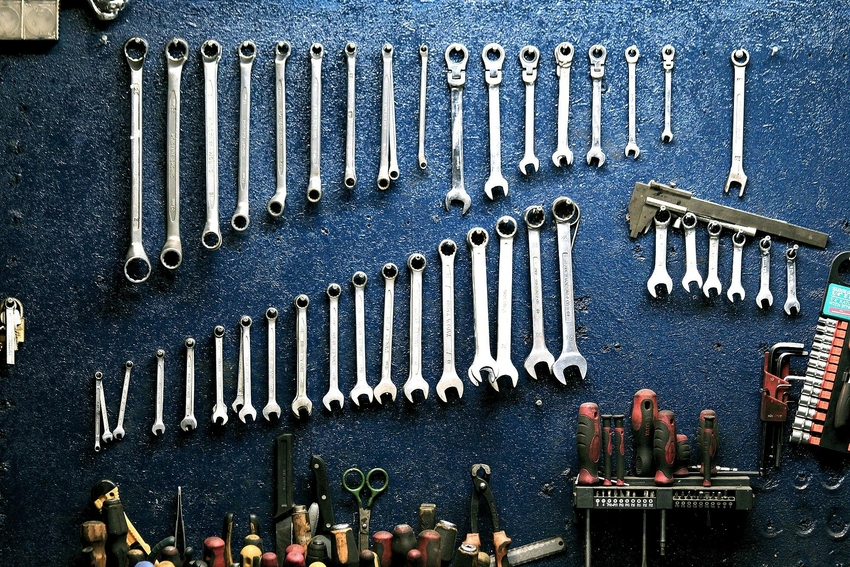
Welcome to Land Rover Maintenance 101, your comprehensive guide to ensuring your vehicle is always ready for the next off-road adventure. As a Land Rover enthusiast, you understand the thrill of exploring rugged terrain and remote destinations. However, to truly enjoy the journey, it’s crucial to prioritize regular maintenance to keep your Land Rover performing at its best. In this guide, we’ll cover essential maintenance tasks, helpful tips, and expert advice to help you maintain your Land Rover for years of trouble-free driving.
Understanding Your Land Rover: A Brief Overview
Before diving into maintenance tips and techniques, let’s take a moment to appreciate the unique characteristics of Land Rover vehicles. Renowned for their legendary off-road capabilities and luxurious features, Land Rovers are designed to tackle the toughest terrain while providing a comfortable and refined driving experience.
Land Rover models come equipped with advanced four-wheel-drive systems, sophisticated suspension systems, and powerful engines engineered to conquer a variety of off-road challenges. Whether navigating rocky trails, traversing muddy terrain, or tackling steep inclines, your Land Rover is built to handle it all with ease.
However, like any vehicle, Land Rovers require regular maintenance to ensure optimal performance and reliability. From routine oil changes to more involved repairs, staying on top of maintenance tasks is essential for prolonging the life of your vehicle and preventing costly breakdowns.
The Importance of Routine Maintenance: Preserving Performance and Reliability
The Importance of Routine Maintenance: Preserving Performance and Reliability
Routine maintenance is the cornerstone of keeping your Land Rover in top shape for endless adventures. By following a regular maintenance schedule, you can identify and address potential issues before they escalate into more significant problems. Here are some key maintenance tasks to prioritize:
- Oil Changes: Regular oil changes are essential for keeping your engine running smoothly and efficiently. Follow the manufacturer’s recommendations for oil change intervals, and be sure to use high-quality oil and filters to ensure optimal performance.
- Fluid Checks: Check and top off all essential fluids, including coolant, transmission fluid, brake fluid, and power steering fluid. Low fluid levels can lead to overheating, transmission issues, brake failure, and other mechanical problems.
- Tire Inspections: Inspect your tires regularly for signs of wear and damage, and ensure they are properly inflated to the recommended pressure. Rotate your tires at regular intervals to promote even wear and extend tire life.
- Brake Maintenance: Check your brake pads, rotors, and brake fluid regularly to ensure they are in good condition and functioning properly. Replace worn brake pads and rotors as needed to maintain optimal stopping power and safety.
- Suspension Checks: Inspect your suspension components, including shocks, struts, and bushings, for signs of wear or damage. Replace worn or damaged parts to ensure a smooth and stable ride on and off the road.
- Electrical System Inspection: Check your battery, alternator, and electrical connections regularly to ensure they are functioning properly. Clean corroded terminals, replace worn batteries, and troubleshoot any electrical issues to prevent starting and charging problems.
By staying proactive with routine maintenance tasks, you can keep your Land Rover performing at its best and enjoy worry-free off-road adventures for years to come. In the next section, we’ll delve into DIY maintenance tips that you can tackle at home to save time and money.
While professional maintenance is essential for certain tasks, there are many DIY maintenance tips and techniques that Land Rover owners can tackle themselves. Not only can this save you time and money, but it also allows you to develop a deeper understanding of your vehicle’s mechanics. Here are some basic maintenance tasks you can perform at home:
- Changing the Air Filter: The air filter prevents dirt, dust, and debris from entering your engine and should be replaced regularly to maintain optimal engine performance. Consult your owner’s manual for instructions on locating and replacing the air filter. Typically, this involves accessing the air filter housing, removing the old filter, and installing a new one in its place.
- Inspecting and Cleaning the Battery: Check your battery terminals for corrosion and clean them with a wire brush and baking soda solution if necessary. Test your battery voltage with a multimeter to ensure it is holding a charge within the recommended range. If the battery is low or failing, replace it with a new one to prevent starting and charging problems.
- Checking and Topping Off Fluids: Regularly check and top off all essential fluids, including engine oil, coolant, transmission fluid, brake fluid, and power steering fluid. Refer to your owner’s manual for specific fluid types and capacities. Use a funnel to add fluid as needed and check for any signs of leaks or contamination.
- Inspecting Belts and Hoses: Inspect your vehicle’s belts and hoses for signs of wear, cracks, or leaks. Replace any worn or damaged belts and hoses to prevent engine overheating and other mechanical issues. Use a flashlight to inspect hard-to-reach areas and replace any components that show signs of wear or damage.
- Checking and Adjusting Tire Pressure: Use a tire pressure gauge to check your tire pressure regularly and adjust it to the recommended PSI. Proper tire inflation is essential for optimal fuel efficiency, tire wear, and handling. Refer to the placard located on the driver’s side door jamb or the owner’s manual for the correct tire pressure for your Land Rover.
- Cleaning and Lubricating Moving Parts: Regularly clean and lubricate moving parts, such as door hinges, latches, and locks, to prevent corrosion and ensure smooth operation. Use a silicone-based lubricant or WD-40 to lubricate hinges and other moving parts. Wipe away excess lubricant with a clean rag to prevent buildup.
By learning how to perform these basic maintenance tasks on your Land Rover, you can save time and money and develop a greater sense of ownership and pride in your vehicle. However, it’s essential to know your limits and seek professional assistance for more complex repairs or issues beyond your expertise.
Specific Maintenance Tips for Different Land Rover Models
Each Land Rover model has its own unique characteristics and maintenance requirements. To ensure your vehicle stays in top shape, it’s essential to understand the specific maintenance needs of your particular model. Here are some specific maintenance tips for four popular Land Rover models: Land Rover Discovery Series I, Land Rover Discovery Series II, Range Rover Classic, and Defender 90/110.

- Land Rover Discovery Series I:
- Coolant System Maintenance: The Discovery Series I is known for its robust V8 engine, but it’s essential to keep the coolant system in good condition to prevent overheating issues. Regularly check the coolant level and condition, and flush the cooling system according to the manufacturer’s recommendations. Inspect hoses and connections for leaks or signs of wear.
- Differential and Transfer Case Service: The Discovery Series I is equipped with durable drivetrain components, but regular maintenance is key to ensuring smooth operation. Check and replace differential and transfer case fluids at the recommended intervals to prevent premature wear and ensure proper lubrication.
- Electrical System Inspection: The electrical system in the Discovery Series I can be prone to issues, particularly with aging wiring harnesses and connectors. Inspect electrical connections, fuses, and wiring harnesses for signs of corrosion or damage. Consider upgrading to more robust aftermarket wiring solutions for improved reliability.

- Land Rover Discovery Series II:
- Timing Belt Replacement: The Discovery Series II is equipped with a timing belt that requires replacement at regular intervals to prevent engine damage. Follow the manufacturer’s recommendations for timing belt replacement, typically between 60,000 and 100,000 miles, depending on driving conditions. Failure to replace the timing belt can result in catastrophic engine failure.
- Suspension Bushing Inspection: The Discovery Series II’s independent suspension system relies on bushings for smooth operation. Inspect suspension bushings for signs of wear or deterioration, particularly in high-stress areas like the control arms and sway bars. Replace worn bushings to maintain proper alignment and handling.
- Transmission Service: The automatic transmission in the Discovery Series II requires regular fluid changes to ensure smooth shifting and prevent overheating. Follow the manufacturer’s recommendations for transmission service intervals, and use high-quality transmission fluid to maintain optimal performance.

- Range Rover Classic:
- Air Suspension Maintenance: The Range Rover Classic is known for its innovative air suspension system, which provides a smooth and comfortable ride both on and off the road. However, the air suspension can be prone to leaks and failures over time. Regularly inspect air springs, lines, and connections for leaks or damage, and replace worn components as needed.
- Brake System Overhaul: The Range Rover Classic is equipped with a sophisticated braking system that requires regular maintenance to ensure optimal performance and safety. Inspect brake pads, rotors, calipers, and brake lines for signs of wear or corrosion, and replace worn components as needed. Bleed the brake system regularly to remove air and maintain proper pedal feel.
- Engine Tune-Up: The Range Rover Classic is available with a range of engine options, including V8 and diesel variants. Keep the engine running smoothly and efficiently by performing regular tune-ups, including spark plug replacement, ignition system inspection, and fuel system cleaning. Follow the manufacturer’s recommendations for tune-up intervals to maintain optimal performance and fuel economy.

- Defender 90/110:
- Chassis Inspection: The Defender 90/110 is built on a rugged ladder-frame chassis designed to withstand the rigors of off-road driving. However, regular inspections are essential to ensure the chassis remains structurally sound. Inspect the chassis for signs of rust, corrosion, or damage, particularly in high-stress areas like the suspension mounts and crossmembers. Treat any rust or corrosion promptly to prevent further damage.
- Four-Wheel Drive System Service: The Defender 90/110 is equipped with a robust four-wheel-drive system that requires regular maintenance to ensure optimal performance off-road. Check and replace transfer case and differential fluids at the recommended intervals, and inspect drivetrain components for signs of wear or damage. Lubricate driveline components regularly to prevent binding and premature wear.
- Body and Interior Care: The Defender 90/110’s utilitarian design means it’s often subjected to harsh off-road conditions and exposure to the elements. Keep the body and interior in good condition by regularly washing and waxing the exterior, and treating any scratches or chips with touch-up paint. Clean and condition the interior upholstery and trim to prevent premature wear and maintain resale value.
Additional Maintenance Considerations: Common Issues and Troubleshooting Tips
While regular maintenance can go a long way in keeping your Land Rover in top shape, it’s essential to be aware of common issues and troubleshooting tips to address any problems that may arise. Here are some additional maintenance considerations to keep in mind:
- Addressing Electrical Issues: Land Rovers, like any modern vehicle, can experience electrical issues over time. From faulty sensors to wiring harness issues, electrical problems can be challenging to diagnose and repair. If you’re experiencing electrical issues such as warning lights on the dashboard, malfunctioning accessories, or intermittent starting problems, it’s best to consult with a qualified mechanic or dealership for diagnosis and repair.
- Dealing with Suspension Problems: Land Rovers are equipped with sophisticated suspension systems that provide a smooth and controlled ride both on and off the road. However, suspension components can wear out over time, leading to issues such as sagging suspension, uneven tire wear, and poor handling. If you notice any signs of suspension problems, such as excessive bouncing, clunking noises, or a rough ride, have your vehicle inspected by a professional technician.
- Managing Engine Performance: Maintaining optimal engine performance is crucial for enjoying a smooth and reliable driving experience. If you notice any issues such as rough idling, reduced power, or poor fuel economy, it’s essential to address them promptly to prevent further damage to the engine. Common engine-related problems in Land Rovers include vacuum leaks, fuel system issues, and sensor failures. Consult with a qualified mechanic or dealership for diagnosis and repair.
- Preventing Rust and Corrosion: Land Rovers are built to withstand rugged off-road conditions, but they are not immune to rust and corrosion. Exposure to moisture, road salt, and environmental contaminants can lead to rust formation on the body, chassis, and undercarriage. Take proactive measures to prevent rust and corrosion by washing your vehicle regularly, applying a rust inhibitor or protective coating, and addressing any scratches or chips in the paint promptly.
- Managing Fluid Leaks: Fluid leaks can indicate underlying issues with your Land Rover’s engine, transmission, cooling system, or drivetrain. Common fluid leaks include oil leaks, coolant leaks, transmission fluid leaks, and power steering fluid leaks. If you notice any puddles or spots under your vehicle, inspect the source of the leak and have it repaired by a qualified technician to prevent further damage to your vehicle’s components.
- Monitoring Warning Lights: Modern Land Rovers are equipped with onboard diagnostic systems that monitor various vehicle systems and components. If you see a warning light illuminated on your dashboard, such as the check engine light, ABS light, or traction control light, it’s essential to address the issue promptly. Ignoring warning lights can lead to further damage to your vehicle and compromise safety.
By staying vigilant and addressing any maintenance issues promptly, you can keep your Land Rover running smoothly and reliably for years to come. Remember to consult with a qualified mechanic or dealership for diagnosis and repair of any complex or recurring issues. With proper care and attention, your Land Rover can provide endless adventures for you and your family to enjoy.
Conclusion: A Commitment to Maintenance and Care
Maintaining your Land Rover is not just about preserving its performance and reliability – it’s also a commitment to caring for a vehicle that has taken you on countless adventures and created lasting memories. By following a regular maintenance schedule, staying proactive with DIY maintenance tasks, and seeking professional assistance when needed, you can keep your Land Rover in top shape for endless adventures on and off the road.
Remember to consult your owner’s manual for specific maintenance recommendations and intervals for your Land Rover model. Additionally, consider joining a Land Rover enthusiast club or online community to connect with fellow owners and share tips, advice, and experiences related to maintenance and care.
Thank you for joining us for Land Rover Maintenance 101. We hope you found this guide helpful and informative. Here’s to many more years of off-road adventures in your beloved Land Rover!


